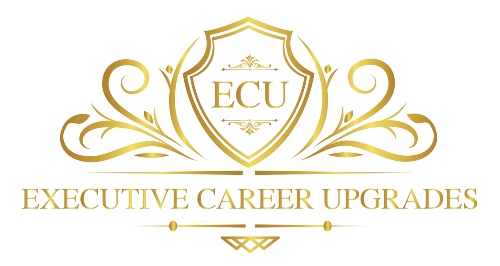In today’s fast-paced business world, executives face immense pressure to deliver results while navigating the complexities of leadership. It’s all too easy for these driven professionals to prioritize their work at the expense of their well-being. However, a balanced approach to life is essential for sustainable success in the boardroom and beyond. Welcome to “Balancing the Boardroom: Mastering Self-Care Techniques for Driven Executives,” where we explore the art of incorporating self-care practices into the daily routines of high-performing leaders. By embracing these techniques, executives can unlock newfound energy, resilience, and clarity, equipping them to lead with confidence and compassion in the face of adversity. Join us as we delve into executive self-care and discover how you can revolutionize your leadership style while preserving your most valuable asset – yourself.
Defining Self-Care in a Professional Context
Before we delve into the self-care techniques that can help executives maintain balance, it’s essential to understand what self-care truly means within a professional context. Self-care is not just about pampering yourself or taking an occasional break. Rather, it’s a conscious and ongoing commitment to nurturing your physical, mental, and emotional well-being, enabling you to perform at your best and navigate challenges with resilience. For executives, self-care involves identifying and addressing personal needs while balancing professional responsibilities and personal well-being.
Identifying Common Challenges Faced By Executives
Executives often face unique stressors and demands that can affect their overall well-being. Some common challenges include high-stakes decision-making, managing organizational change, handling difficult interpersonal situations, and maintaining an unwavering commitment to company performance. These stressors can manifest in various ways, including long work hours, frequent travel, and constant connectivity. To effectively address these challenges, executives must prioritize self-care as a vital component of their leadership strategy.
Recognizing the Signs of Burnout and Stress
Burnout and stress can creep up on even the most seasoned executives. Recognizing the signs is crucial to addressing them before they take a significant toll on personal and professional life. Symptoms of burnout can include chronic fatigue, irritability, difficulty concentrating, and decreased job satisfaction. Additionally, stress may manifest as overwhelming anxiety and a loss of control. By becoming aware of these signs, executives can take the necessary steps to recalibrate their self-care practices and prevent long-term negative consequences.
Transitioning to Self-Care Techniques
Now that we have a clear understanding of self-care in a professional context, the challenges executives face, and the signs of burnout and stress, we can move on to exploring the key self-care techniques that can help you maintain balance and perform at your best. These practices will not only improve your personal well-being but also contribute to your ability to lead effectively and inspire your team. In the next section, we will delve into five critical self-care techniques that every executive should incorporate into their daily routine.
Five Key Self-Care Techniques for Executives
Mindfulness and Meditation
Mindfulness and meditation are powerful tools for executives looking to improve their decision-making abilities and manage stress more effectively. Regular mindfulness practice can help develop self-awareness, emotional regulation, and mental clarity, all essential qualities for effective leadership. Additionally, meditation can help reduce anxiety, improve concentration, and foster a sense of calm in high-pressure situations.
To incorporate mindfulness into your daily routine, set aside a few minutes each day to focused breathing exercises or guided meditation. Apps like Headspace or Calm can provide guided sessions to help you get started. You can also practice mindfulness throughout the day by taking brief pauses to check in with your thoughts, emotions, and bodily sensations, especially during stressful moments or decision-making processes.
Exercise and Physical Health
Regular exercise is crucial to maintaining energy levels and overall well-being. Physical activity has been proven to reduce stress, improve mood, and enhance cognitive function – all of which contribute to better decision-making and leadership. A consistent exercise routine can also help combat the negative effects of a sedentary lifestyle, common among executives who spend long hours sitting in meetings or at their desks.
To find the right exercise routine, identify activities you enjoy and can easily integrate into your schedule. This could be a morning run, lunchtime gym, or evening yoga class. Aim for at least 150 minutes of moderate-intensity aerobic exercise per week, and consider adding strength training to your regimen to further boost your physical and mental health.
Nutrition and Hydration
A balanced diet is essential for optimal cognitive function, energy levels, and overall health. Poor nutrition can lead to fatigue, difficulty concentrating, and increased susceptibility to illness, all of which can hinder your performance as an executive.
To optimize your nutrition, focus on consuming a balanced diet rich in whole foods, lean proteins, healthy fats, and complex carbohydrates. Prioritize hydration by drinking plenty of water throughout the day. For busy executives, consider meal planning or using a meal delivery service to ensure you have nutritious options readily available. Eat healthy snacks, such as nuts, fruit, or yogurt, to maintain energy levels during long workdays.
Time Management and Work-Life
Mastering time management is essential for achieving work-life balance and preventing burnout. Effective delegation and prioritization can free up valuable time for self-care and personal commitments. To improve delegation, identify tasks that can be assigned to team members and communicate expectations. Prioritize, focus on high-impact tasks and create a daily to-do list that aligns with your goals.
Setting boundaries between work and personal life is crucial for maintaining balance and preventing burnout. Establish “non-negotiable” personal and family time, such as evenings or weekends, and communicate these boundaries to your team. Disconnect from work during these periods by turning off work-related notifications and emails. Taking time for yourself will ultimately make you a more effective leader.
Self-care is an essential component of effective leadership and sustainable success for executives in today’s demanding business environment. By prioritizing self-care and incorporating the four key techniques discussed in this post – mindfulness and meditation, exercise and physical health, nutrition and hydration, time management and work-life balance – you can cultivate a well-rounded approach to your personal well-being, enhance your decision-making abilities, and foster a more resilient, high-performing mindset.
Now is the time to take action and invest in yourself. Begin integrating these self-care practices into your daily routine and experience the transformative impact they can have on your personal and professional life. Remember, as an executive, your most valuable asset is yourself – so start prioritizing your self-care today and unlock your full potential as a leader.
If you’re ready to take control of your career and reach new heights, consider getting professional support. With our program, you’ll have the tools and resources you need to save time and make a significant impact in your career. Don’t wait, schedule your call today and start your journey to career success.


